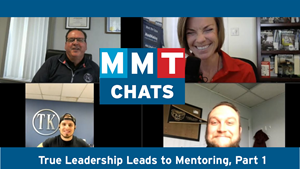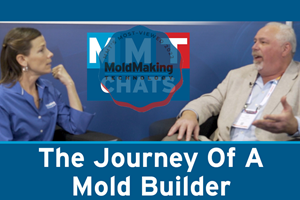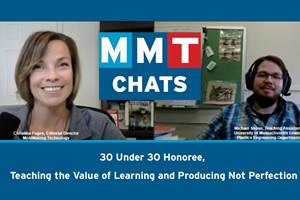Do-Rite Die & Engineering: Doing Right by Its Customers With Die Cast Dies
Learning the intricacies of die cast die building offers moldmakers an alternative to mold manufacturing and can generate more repeat business.
Do-Rite Die & Engineering (South Chicago Heights, IL)—a builder of die casting dies serving local custom die casters—has found the secret to its longevity is its dedicated employees, one of whom has been with the company more than 50 years as well as choosing to specialize in building die cast dies rather than plastic molds. Over the years Do-Rite has gotten the building of its dies down to a science and perfected its craft as equipment and technology has advanced.
The 16-employee shop has managed to stay in the black with no layoffs during a difficult time these past five years, notes president Alan Szymanski. This can be partly attributed to the fact that Do-Rite Die has been supplying a major power tool company—its biggest customer—for approximately 40 years.
The “Rite” Decision
According to Szymanski, his father John started the business in 1953 after his coworkers at Dohler Jarvis—a leading custom die caster that was instrumental in the development of the first die casting machine as well the formulation of H-13 tool steel—noticed his design talents. John partnered with a neighbor and they named the company after their wives Dorothy and Rita, renting an old machine shop. One motor powered a main pulley system that transferred power to each machine tool using belts and pulleys.
After two years they began to hire part-time employees and soon added an apprentice since moldmakers were scarce in the southern suburbs of Chicago at that time. As the company gradually modernized John found they needed more space. In 1969, Do-Rite built a new facility which the company still occupies. His three sons worked in the shop in their high school years as sweepers—moving to machine work as they matured. Today, Alan and his brother Edward run the business.
Dedicated Workforce
Szymanski notes that a majority of Do-Rite’s employees started with the company right out of high school and have been there since, which gives him the opportunity to oversee their training. Until recently, that included training them on older equipment. When it came time for the company to purchase its first CNC, the Szymanski brothers attended classes at the local community college to learn how CNC could be applied to their processes. “At this point, we realized that a CAM system needed to be purchased along with the first CNC machine,” Szymanski recalls. “When we started buying the newer technology we were amazed with the results. We then stopped letting the moldmakers run all of the equipment and started putting our people on one piece of equipment so they would become proficient. Most of our awareness of technology came from competent machine salesmen who could see what our needs were and could supply us with the proper equipment.”
Now, Szymanski makes sure he keeps informed about all of the latest equipment by attending trade organization conventions, looking through magazines, and meeting with salesmen. One of his main goals is to keep the graphite mill, ram EDMs, and wire EDM busy by running unattended and making sure his employees are fully trained on the equipment they are responsible for by sending them to the training classes offered by the company’s equipment and software suppliers.
He feels his highly trained workforce is the company’s biggest asset to help its customers with design and production issues. “Dies must be built to eliminate excessive handwork and part geometries must often be modified to make the part easier to cast,” Szymanski explains. “An experienced workforce cuts down on the amount of supervision required and thus makes the job move faster.”
Die Making Versus Moldmaking
Although both die cast dies and plastic molds use the same equipment, there are differences. “The major difference between die cast dies and plastic molds is design,” Szymanski explains. “If a plastic mold builder wants to build die cast dies, they need to have a person with die cast experience to oversee the design and building process. Since the metal injection temperature of aluminum is close to the tempering temperature of the tool steel, the cavity steel fails at a faster rate—especially where the part is gated. Thus, die cast dies require heavier die blocks, high quality tool steel, and high pressure quench heat treatment. In general, a die cast die will be about 50 percent larger than a plastic mold for the same part.”
Szymanski adds that all die cast die cavities must be made from hardened tool steel. “Because metal is a good conductor of heat, the part solidifies quicker and thus pumps the heat into the mold quicker,” he notes. “This creates large temperature gradients which cause the tool steel to fail. The die also runs in a very abusive environment. Flashing of the die causes major problems. Slide mechanisms must be designed to minimize areas where flash can build up. Parting lines also must be designed for the same consideration. The quality of polish is not as high for die cast dies. If there are high cosmetic part requirements, they are usually done to the part itself after casting.”
For moldmakers who wish to add die casting to their repertoire, Szymanski advises doing their homework. “From my experience companies that build only plastic injection molds will under-design a die cast die for reasons stated above,” he states. “The equipment required is the same. The only difference would be in your material handling capacity. You also will require more expense in cleaning molds and the shop floor due to the conditions these molds run in. Die cast dies also require more frequent cavity replacement, but gives you an opportunity for repeat work.”
Moving Forward
Szymanski would like to see legislation pass that would protect Do-Rite and fellow shops from loss of profits. “The challenge we face currently is losses due to companies going out of business and not getting paid,” he comments. “Also, many companies are cutting back on their personnel and we are expected to fill the gap. To prevent losses from customer fallout we must try to get legislation that keeps us as the owner of the tool until we are paid. If a customer goes out of business via bankruptcy and he has the tool we built, we cannot get the tool back. At this point, it is not considered our property and we do not have a right to get it back. We need to be protected against this. I am a member of the American Mold Builders Association (AMBA) and Tooling & Manufacturing Association (TMA)—both organizations that are working to address these types of challenges.”
Additionally, Szymanski would like to see apprenticeship programs change to focus more on a specific area of the die making process such as CNC milling, EDM’ing, mold designing, etc. And, while the company has no turnover problem at this time, Szymanski realizes the company will soon need to prepare for the next generation. “I plan to do this by seeking high school students who possess an aptitude for this work,” he says. “I also will make an effort to promote precision metal cutting to high school students and their parents by get-ting promotional material to the schools, opening our shop for field trips, hiring students part time, and participating in career days at the local high schools.”
In the end, Szymanski notes Do-Rite Die’s ultimate goal is to “do right” by its customers. “What it all comes down to is us doing our best to give the customer value.”
Related Content
From Injection Mold Venting to Runnerless Micro Molds: MMT's Top-Viewed June Content
The MoldMaking Technology team has compiled a list of the top-viewed June content based on analytics. This month, we covered an array of topics including injection mold venting, business strategies and runnerless micro molds. Take a look at what you might have missed!
Read MoreICYMI: MMT Chats: True Leadership Leads to Mentoring, Part 1
This trio from TK Mold and Engineering in Romeo, Michigan, joins me to discuss the role of leadership and culture in mentorship. This episode is brought to you by ISCAR with New Ideas for Machining Intelligently.
Read MoreMMT Chats: California Mold Builder Discusses the Difficulties with Silicone Molding and the Power of the Magic 8 Ball
MoldMaking Technology Editorial Director Christina Fuges sits down with M.R. Mold President and Owner, Rick Finnie, to discuss how he began his moldmaking career, M.R. Mold's LSR Education, and the struggles of working with silicone. This episode is brought to you by ISCAR with New Ideas for Machining Intelligently.
Read MoreICYMI, MMT Chats: 30 Under 30 Honoree, Plastics Engineering TA Teaches Value of Learning and Producing Not Perfection
MoldMaking Technology Editorial Director Christina Fuges brings on UMass Lowell Plastics Engineering Teaching Assistant Michael Shone as a guest for this MMT Chat to discuss moldmaking through the lens of academia. This episode is brought to you by ISCAR with New Ideas for Machining Intelligently.
Read MoreRead Next
Are You a Moldmaker Considering 3D Printing? Consider the 3D Printing Workshop at NPE2024
Presentations will cover 3D printing for mold tooling, material innovation, product development, bridge production and full-scale, high-volume additive manufacturing.
Read MoreHow to Use Continuing Education to Remain Competitive in Moldmaking
Continued training helps moldmakers make tooling decisions and properly use the latest cutting tool to efficiently machine high-quality molds.
Read MoreHow to Use Strategic Planning Tools, Data to Manage the Human Side of Business
Q&A with Marion Wells, MMT EAB member and founder of Human Asset Management.
Read More













.jpg;maxWidth=300;quality=90)














